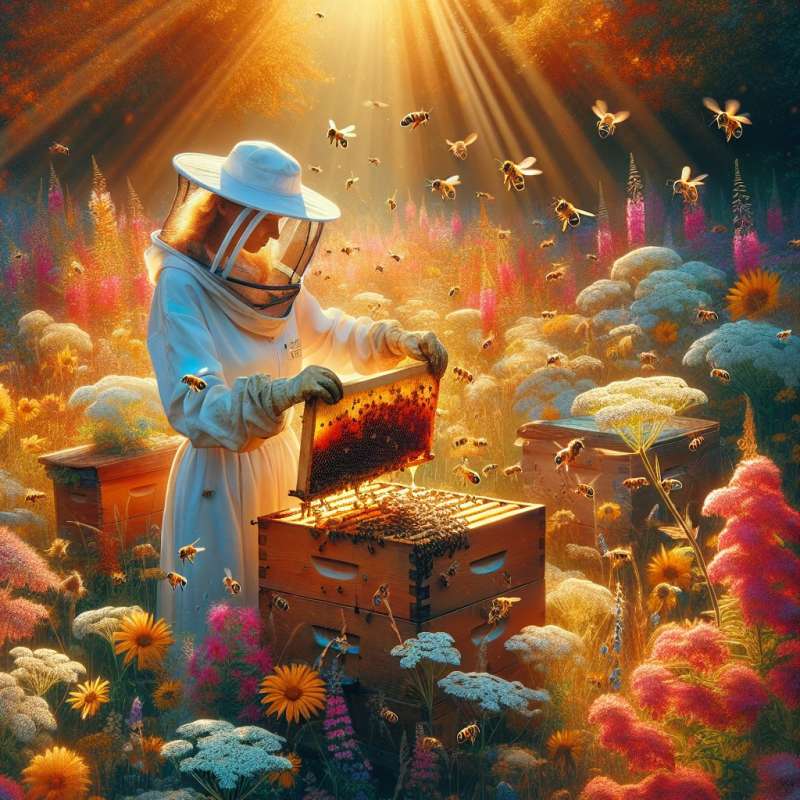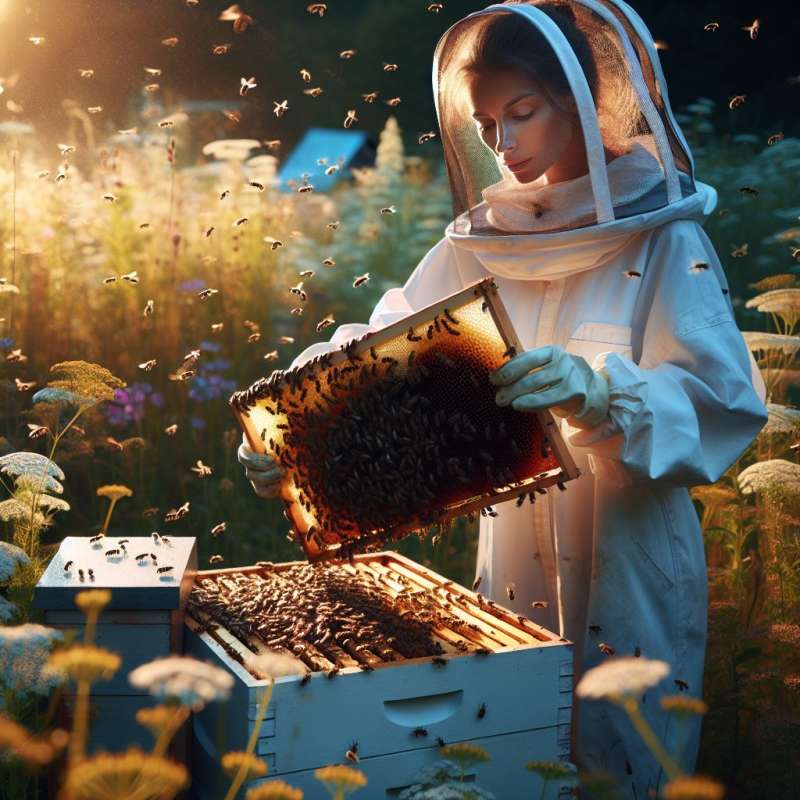
Understanding Bee Life-Cycles
Timing honey harvest is crucial. Align with bees' natural cycles to avoid colony stress. Harvest after the main nectar flow, ensuring bees have sufficient food reserves for winter.
Observing Nectar Flows
Identify local nectar flows by observing flowering patterns. Harvest honey when these plants finish blooming, as bees will have completed their foraging and honey production.
Bee Population and Health
Check hive strength before harvesting. Strong colonies with more bees can spare more honey. Ensure bee health and disease absence to avoid compromising the hive.
Weather Impacts Harvest
Weather affects nectar availability. Dry spells or excessive rain reduce nectar; thus, monitor weather forecasts to plan the optimal harvest time.
Checking Honeycomb Status
Harvest when most honeycombs are capped with wax, indicating honey maturity and readiness for extraction. Uncapped honey has high water content and may ferment.
Ethical Harvesting Practices
Harvest only surplus honey, leaving enough for bees. An average hive needs about 40 pounds of honey to survive winter. Overharvesting risks colony starvation.
Post-Harvest Hive Management
After harvesting, manage the hive to prevent robbing from other bees or wasps. Replace frames and close the hive promptly. Monitor for stress and feed if necessary.Bees' Super Memory
Honeybees can remember and recognize human faces, helping them identify friendly beekeepers and avoid potential threats.
When should honey be harvested?
Before nectar flow begins
During main nectar flow
After main nectar flow ends
Company